Red Rock Canyon, Nevada
Steven Dutch, Professor Emeritus, Natural and Applied Sciences, Universityof Wisconsin - Green Bay
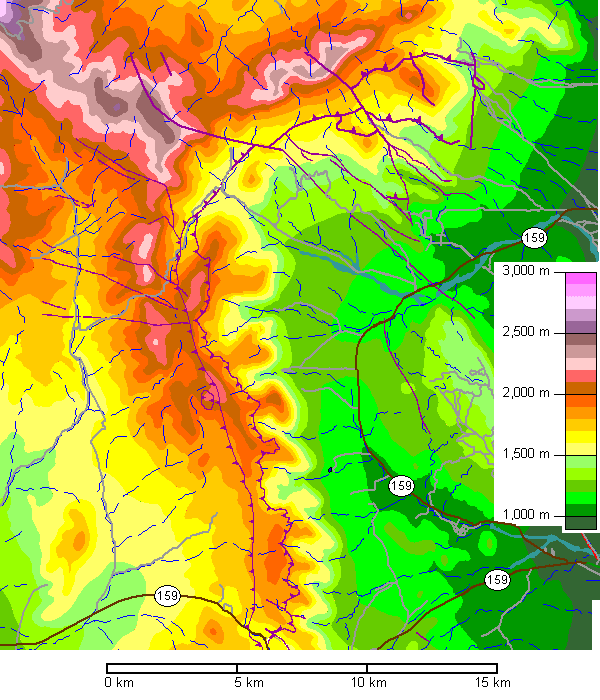
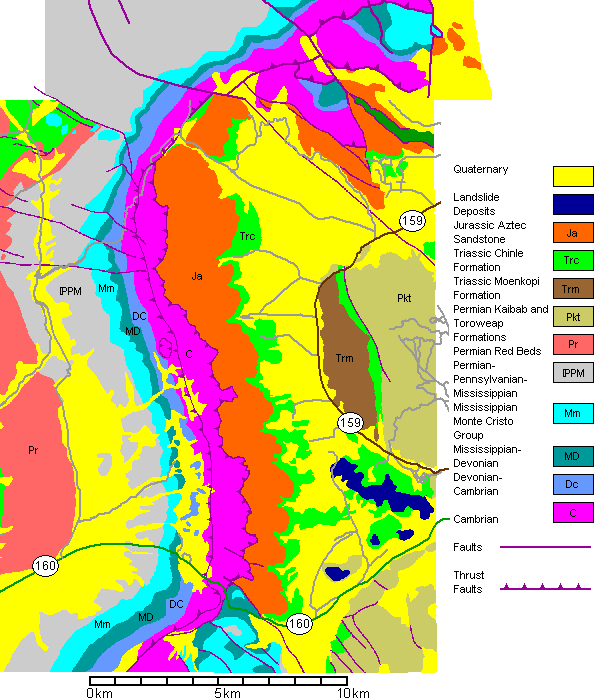
Sources:
Workman, J.B., Menges, C.M., Page, W.R., Taylor, E.M., Ekren, E.B., Rowley, P.D., Dixon, G.L., Thompson, R.A., and Wright, L.A., 2002; Geologic map of the Death Valley ground-water model area, Nevada and California, U.S. Geological Survey Miscellaneous Field Studies Map MF-2381-A, 1:250,000
Bohannon, R.G. and Morris, R.W., 1983, Geologic and mineral resources map of the Red Rocks Escarpment Instant Study Area, Clark County, Nevada: U.S. Geological Survey, Miscellaneous Field Studies Map MF-1522, scale 1:62,500.
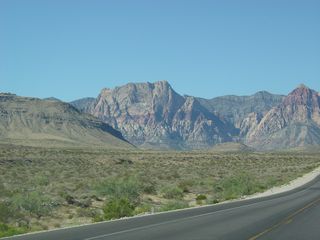 |
Approaching Red Rocks from the north on Nevada 159. I had been to this area as recently as 2001 and was struck then by the growth of the suburbs, but what has happened since then is insane. Development has spread nearly to the edge of the protected area. |
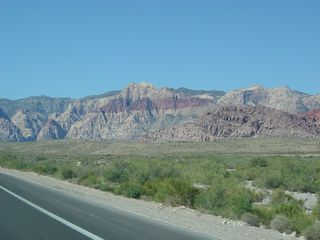 |
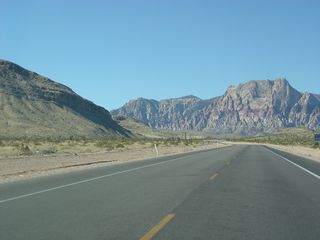 |
Visitor Center
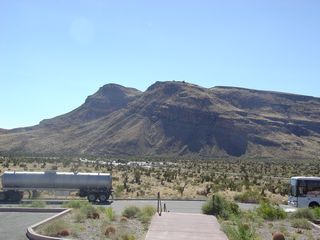 |
Permian rocks of the Blue Diamond hillsdipping westward. These underlie the Chinle Formation at the base of the Red Rocks cliffs. |
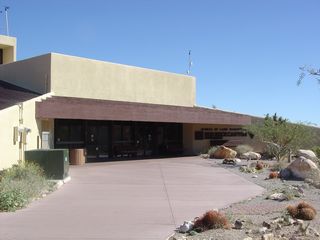 |
|
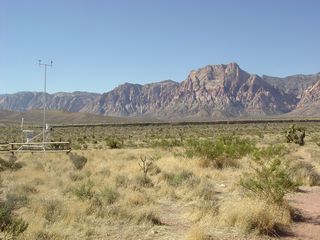 |
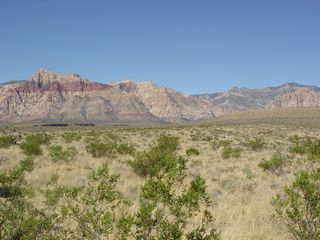 |
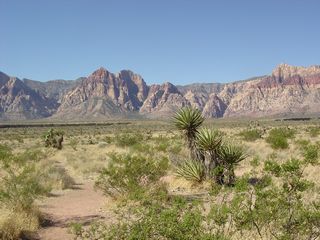 |
Above: The cliffs are Jurassic Aztec sandstone. Below: looking north from the Visitor Center, a horst of Aztec sandstone rises above the fan surface. |
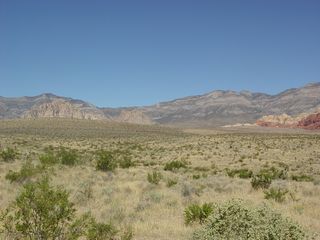 |
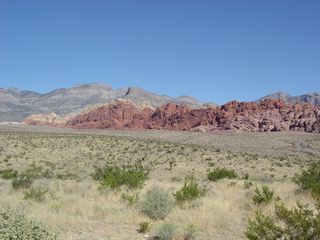 |
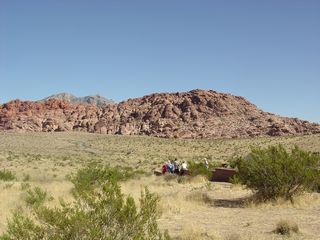 |
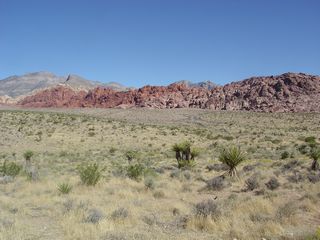 |
Below: Panorama of Red Rocks from the Visitor Center

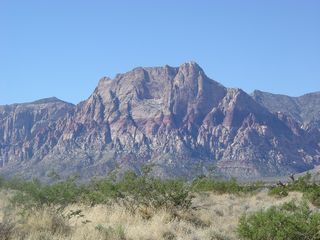 |
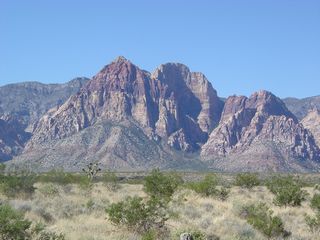 |
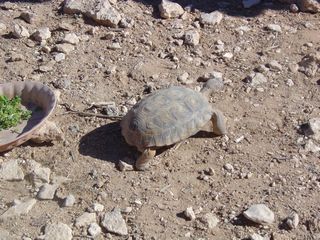 |
Above: The cliffs from the Visitor Center Left and below: desert tortoises |
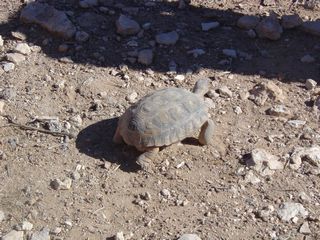 |
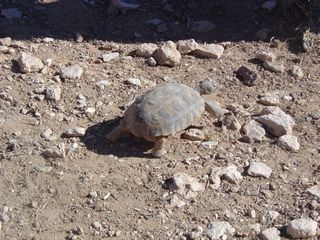 |
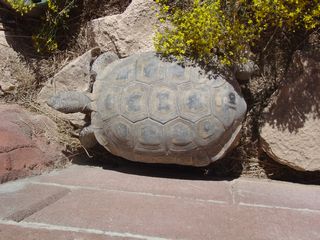 |
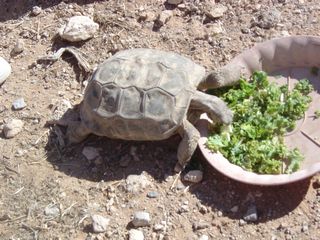 |
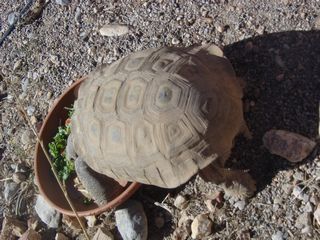 |
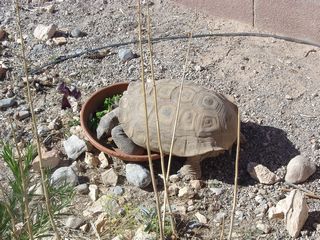 |
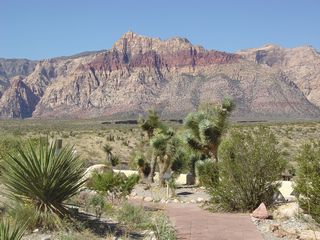 |
Joshua tree and the Red Rocks. Joshua trees are most commonly associated with California but occur as far east as southern Utah and northern Arizona. |
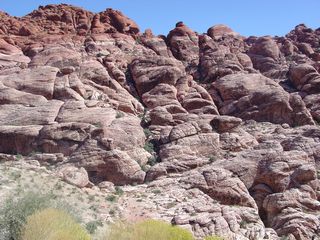 |
Left and below: cross-bedded Aztec Sandstone. |
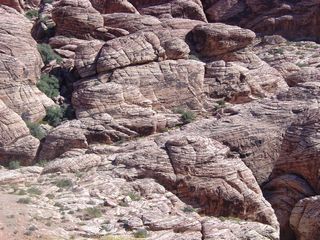 |
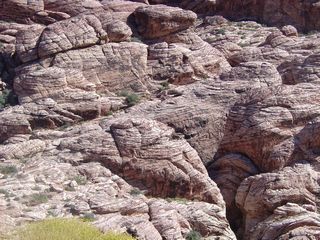 |
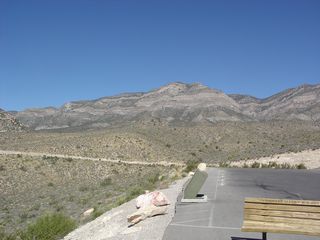 |
Left and below: views from the White Rock Trail viewpoint. The peaks at left are Paleozoic marine rocks. |
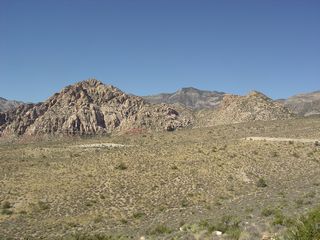 |
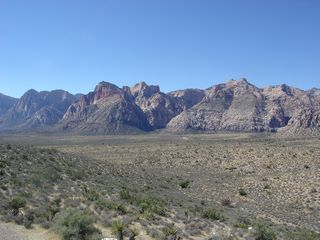 |
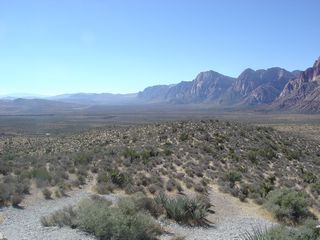 |
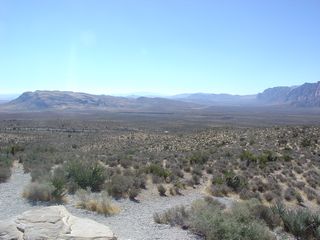 |
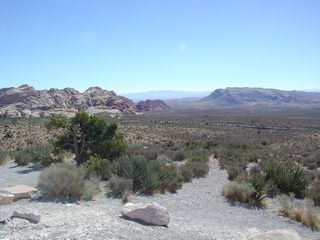 |
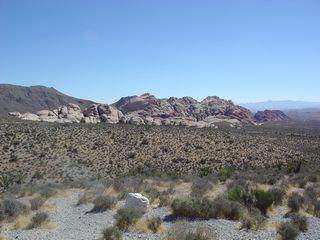 |
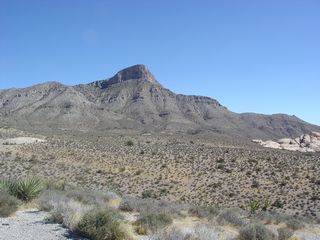 |
The gray peak is Paleozoic marine rocks. The light sandstone below is Jurassic Aztec Sandstone. The contact is the Keystone Thrust Fault. |
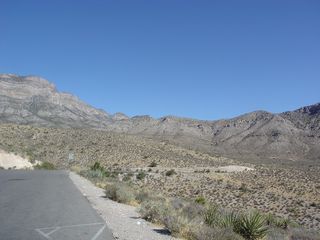 |
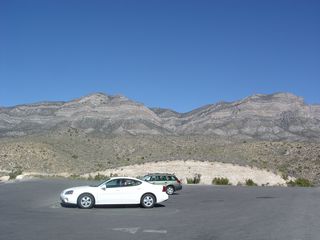 |
Below: Panorama from the parking area. The inconsistent perspective of the parking lot is due to taking pictures from slightly different vantage points.

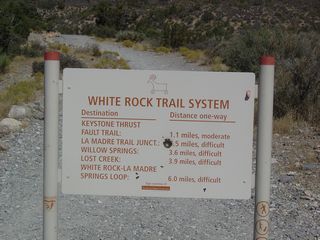 |
Trailhead for the Keystone Thrust contact |
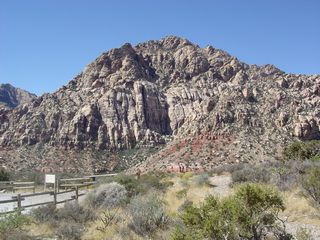 |
Red Rocks from the trailhead parking area. |
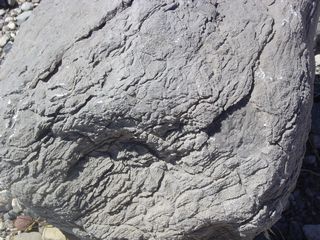 |
Carbonate rocks aren't hard it terms of the Mohs hardness scale
and in humid climates they weather quickly, but in arid landscapes they
are resistant. These photos show the characteristic etching that develops on the surface of carbonate rocks in arid climates. This stuff is murder on pants - a pair of pants wears out in a few days after sitting on this stuff. |
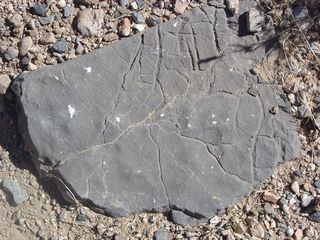 |
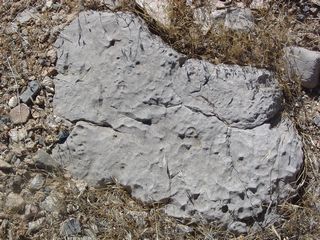 |
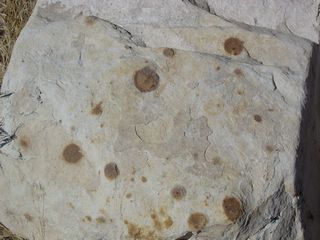 |
Left and below: the Mars rovers have aroused great interest in spherical iron concretions on earth, because very similar features have been observed on Mars. |
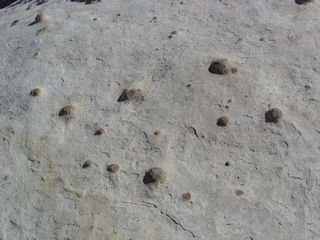 |
|
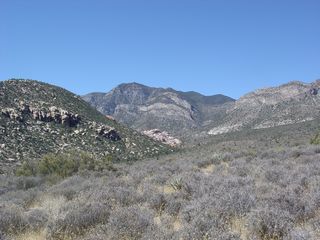 |
The Keystone Thrust terminates here, offset by a fault. The hill to left and the pink knob beyond are Jurassic Aztec sandstone. The thrust on my side of the fault is somewhere beneath me but hidden by alluvial fan deposits. Fault offset is therefore right-lateral. |
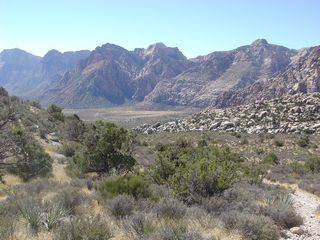 |
Left and below: looking south along the Red Rock front from the trail. |
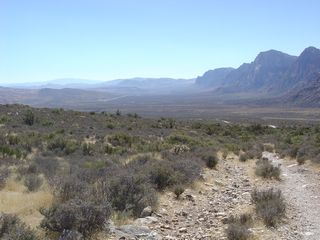 |
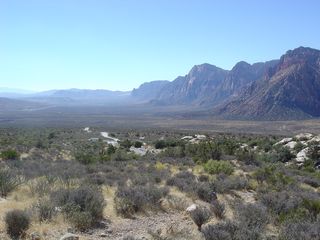 |
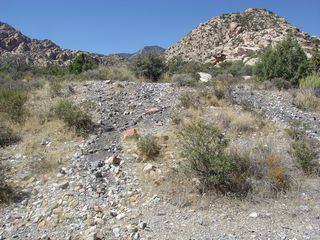 |
|
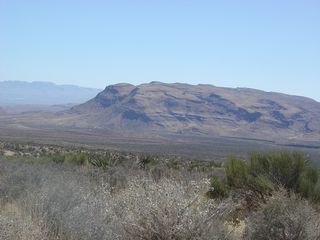 |
View of the Blue Diamond hills. |
Keystone Thrust Contact
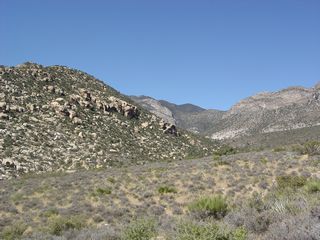 |
A small knob of Cambrian Bonanza King limestone sticks out through the alluvial fan |
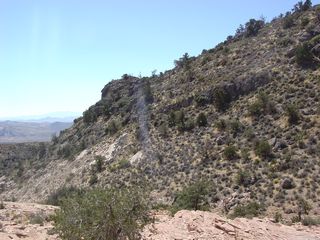 |
A small window in the thrust sheet exposes the Mesozoic sandstones.
Although it's possible to define the contact to within a few feet -
in geologic mapping terms the contact is razor sharp - there don't appear
to be any easily accessible places where you can actually put your hand
right on the contact. Here the gray, thick bedded limestone lies above the pink sandstone. |
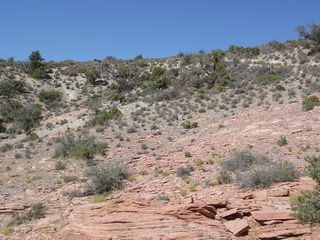 |
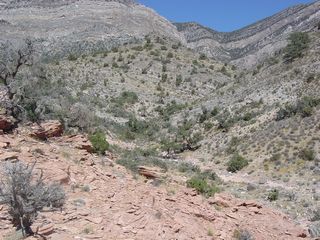 |
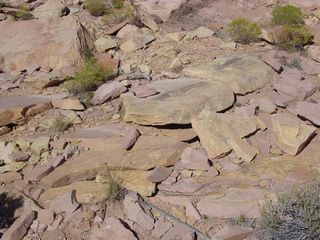 |
Closeup of the sandstone. |
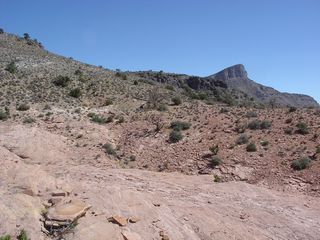 |
This photo and the ones below show the contact about as sharply defined as it can get. |
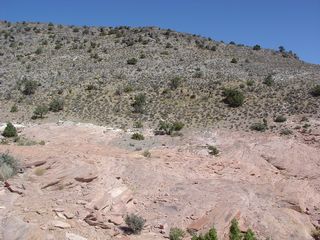 |
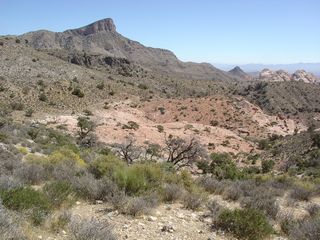 |
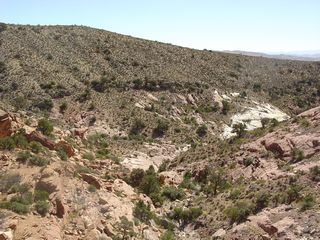 |
That looks promising, where a thick limestone bed lies immediately above the sandstone, but there's about a fifty-foot cliff in the bottom of the ravine straight ahead. |
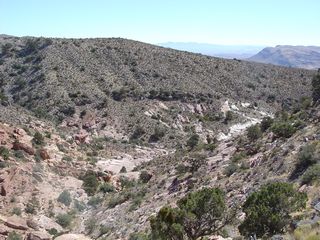 |
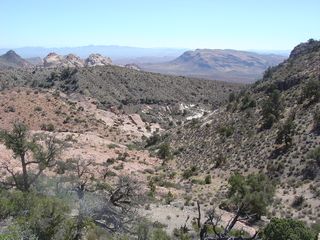 |
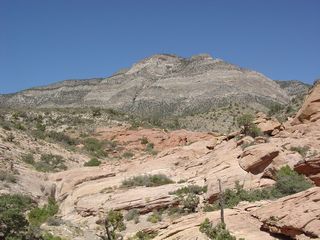 |
Looking north. |
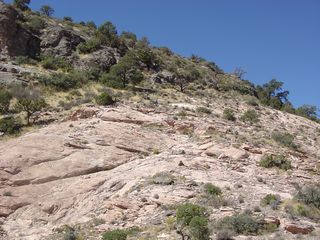 |
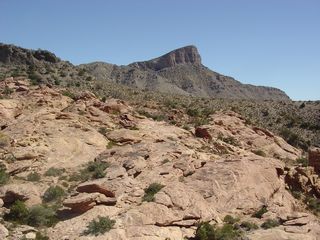 |
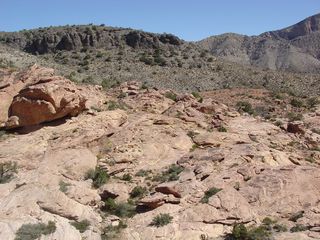 |
|
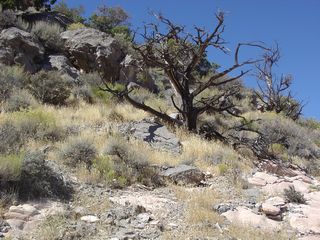 |
Here limestone and sandstone are exposed in place only a few feet apart, but not the contact itself. |
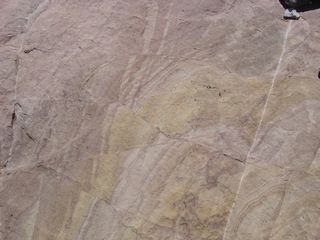 |
Close to the thrust, small scale faulting and brecciation is common in the sandstone. |
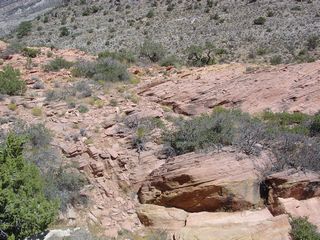 |
|
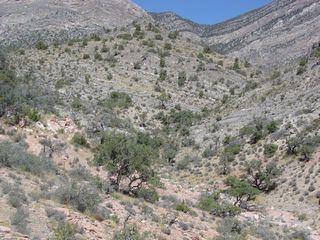 |
Below: brecciated sandstone near the fault contact. |
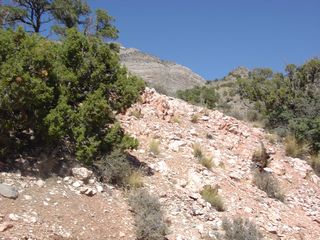 |
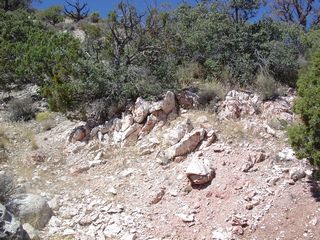 |
Wild Burros
 |
Of course people pay attention to these signs! |
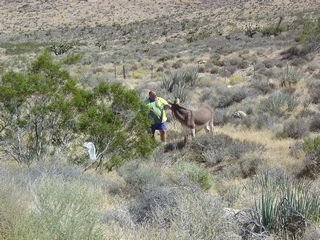 |
Here's a great picture of a jackass. He's the one feeding the burro. |
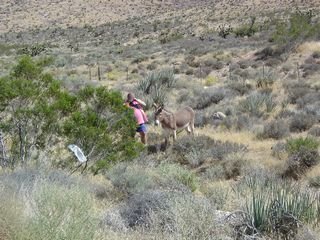 |
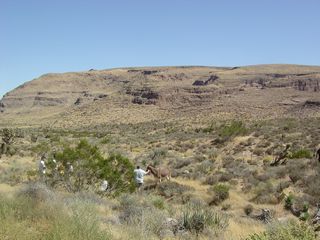 |
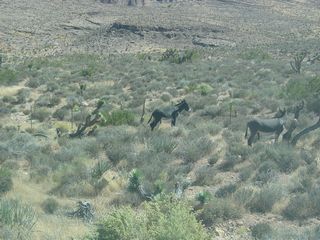 |
The burros, of course, are feral descendants of escaped or abandoned domestic animals. |
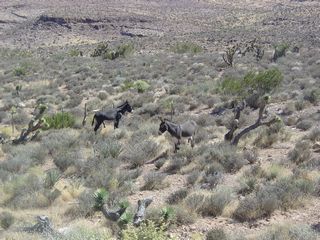 |
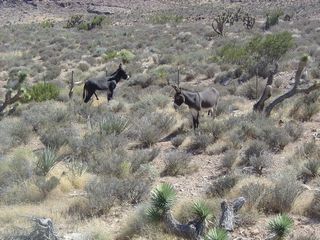 |
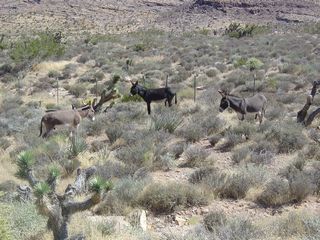 |
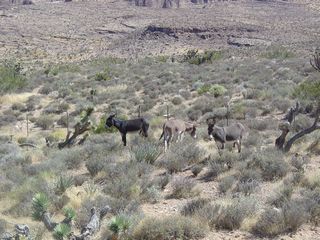 |
Return to Historic Sites Index
Return to Virtual FieldTrips Index
Return to Professor Dutch's Home Page
Created 15 November 2005, Last Update 08 June 2020